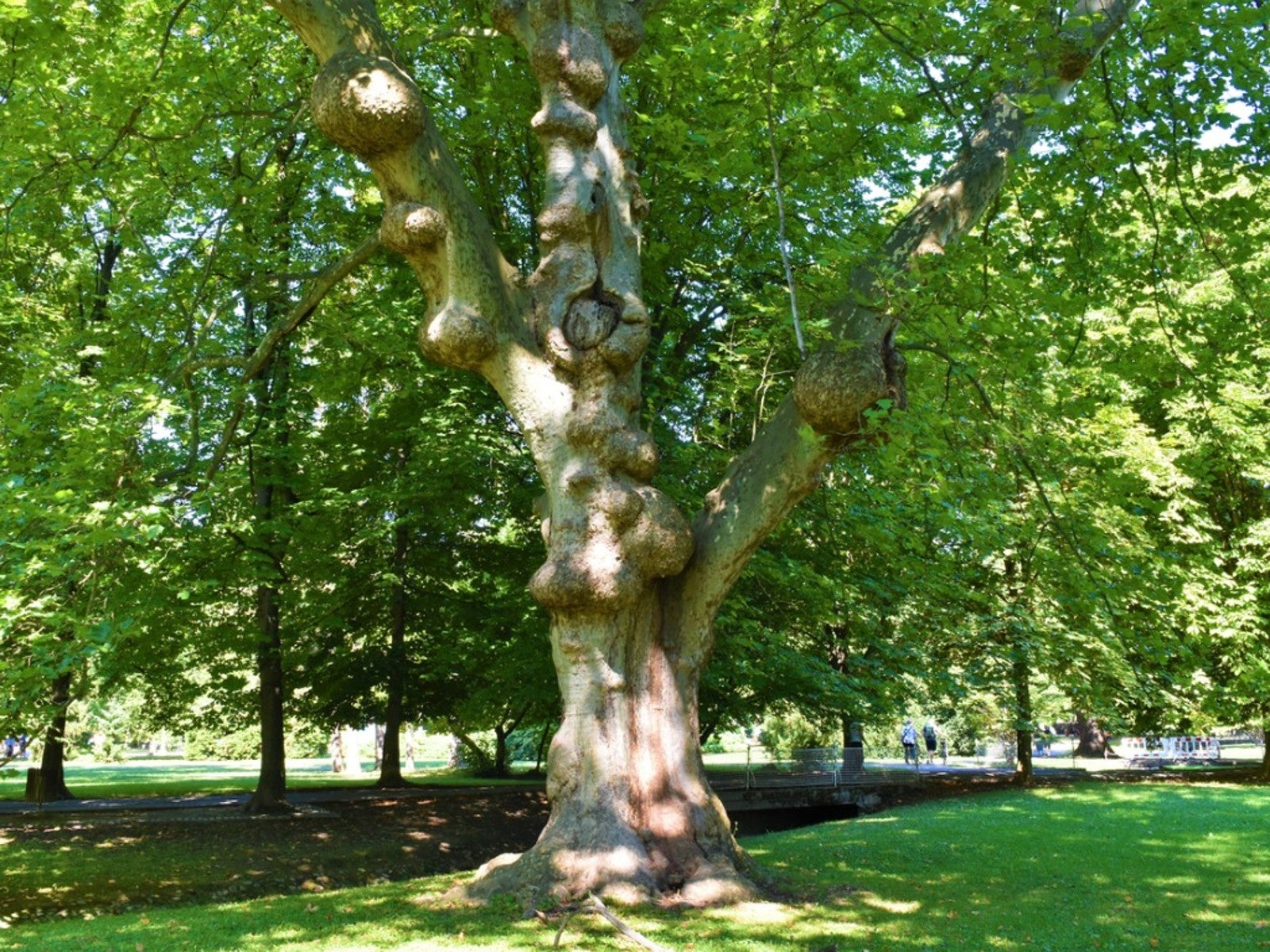Sycamore Tree Problems – Treating Sycamore Tree Diseases And Pests


Tall, fast growing, and durable, the sycamore tree—with its large, maple-like leaves—is an elegant addition to your backyard landscape. Its most recognizable feature is its bark that peels away as the trunk expands, revealing the white, tan, and green inner bark. However, it is possible that you experience problems with sycamore trees. These can range from sycamore tree pests to sycamore tree diseases. Read on for information on sycamore tree problems.
Avoiding Problems with Sycamore Trees
Sycamore trees are vulnerable to diseases and insect pests, just like almost every variety of tree you can plant. Experts advise that you keep your tree healthy, with good cultural practices, as a first line of defense against problems with sycamore trees.
Generally, the healthier and more vital the tree, the less it will experience sycamore tree problems. However, even well placed, irrigated, and fertilized sycamore trees can get some pests and diseases.
Sycamore Tree Pests
One of the most common sycamore tree pests is the sycamore lace bug that gets its name from the lacy pattern on the adult’s wings, head, and chest. The insects feed on the undersides of the sycamore's leaves.
While the sycamore lace bug’s damage is rarely serious, a heavy infestation can slow the tree’s growth. Keep an eye on your tree leaves and wash off bugs with the hose. Insecticides are also available.
Diseases of Sycamore Trees
You’ll find that there are quite a few diseases of sycamore trees. The most dangerous of the diseases of sycamore trees is anthracnose, also called leaf and twig blight. It can kill American sycamore, although it does only minor damage to other varieties.
This disease can kill twig tips, expanding to buds, new shoots, and leaves. The symptom you see most frequently is crinkling and browning of the leaves. This sycamore tree disease is most likely to strike when the weather is cool and wet. Spores from the fungus can be spread by rain and wind. If you give your trees sufficient water and fertilizer, you are unlikely to see this sycamore tree disease.
Sign up for the Gardening Know How newsletter today and receive a free copy of our e-book "How to Grow Delicious Tomatoes".
Another common disease of sycamore trees is powdery mildew fungus. It can be treated with fungicides.
Bacterial leaf scorch can also be a problem. It is caused by Xylella fastidiosa, a bacterial pathogen that kills off entire branches of the tree. Pruning infected branches can slow its spread.

Teo Spengler is a master gardener and a docent at the San Francisco Botanical Garden, where she hosts public tours. She has studied horticulture and written about nature, trees, plants, and gardening for more than two decades, following a career as an attorney and legal writer. Her extended family includes some 30 houseplants and hundreds of outdoor plants, including 250 trees, which are her main passion. Spengler currently splits her life between San Francisco and the French Basque Country, though she was raised in Alaska, giving her experience of gardening in a range of climates.